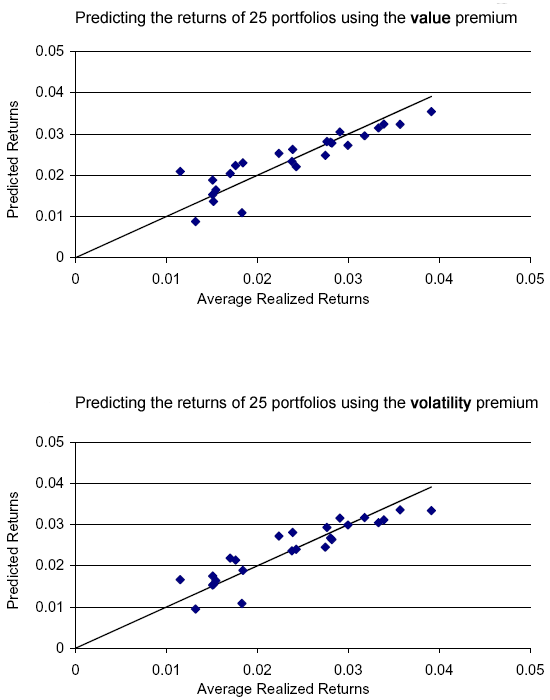Conventional wisdom holds that: (1) risk begets reward; and, (2) volatility is a manifestation of risk. Exceptionally high volatility in individual stock prices should, therefore, indicate future excess returns in those stocks. In their May 2006 paper entitled “The Relation between Time-Series and Cross-Sectional Effects of Idiosyncratic Variance on Stock Returns in G7 Countries”, Hui Guo and Robert Savickas investigate why the realized idiosyncratic volatility (beta) of individual stocks correlates negatively with future returns — why there is a penalty instead of a reward for this apparent risk. Using two sets of U.S. data (1926-2005 and 1963-2005) and one set of international data (1973-2003), they conclude that:
- Stocks with high realized idiosyncratic volatility do tend to underperform, both in the U.S. and internationally.
- Overall stock market volatility consistently relates positively to the returns of various portfolios of small, medium-sized and large market capitalizations. However, average idiosyncratic volatility relates negatively to these same returns.
- The idiosyncratic volatility premium relates strongly to the value premium. Value stocks tend to have low volatilities, while growth stocks tend to have high volatilities. (See the figure below.)
- The underlying cause of the volatility premium and the value premium is sensitivity to discount rate shocks. Volatile (growth) stocks are very sensitive to discount rate shocks, while quiet (value) stocks are not.
The following figures, taken from the paper, show two different ways of predicting the returns of the same 25 portfolios. The top figure shows the results of predictions based on the value (book-to-market) premium, with portfolios ranking higher in value outperforming those ranking lower in value. The bottom figure shows the results of predictions based on the volatility premium, with portfolios ranking higher in average idiosyncratic volatility outperforming those ranking lower in volatility. The very similar results confirm a close, negative relationship between value and volatility. Value stocks tend to be less volatile than growth stocks.

In summary, the idiosyncratic volatility premium is closely related to the value premium, with low volatility and high value stocks tending to outperform. Insensitivity to discount rate (inflation, interest rates) shocks is the common underlying factor.